All about vaults and safes
Everything you wanted to know about safes and were afraid to ask :-)
Choosing the right type of safe can save you a lot of trouble and often money. A safe certified to the highest security class will surely provide excellent protection. But if you only intend to store, for example, photos, this investment is somewhat unnecessary. But in the end, it will always be up to you.
Several factors will always influence your choice:
- security class of the safe
- storage type (what will be stored in the vault)
- safe location (floor, wall, furniture)
- specific properties (dimensions, fire resistance, etc.)
the resulting choice is either a combination or a compromise between these options.
Vault security
You can purchase a safe in a version without or with certification. The variant without certification (the so-called safety deposit box) will be sufficient for home use (small cash), for example in the form of a furniture safe.
In other cases, a certified safe is recommended (according to the ČSN 1143-1 standard). The individual classes then depend on the value of the items that will be stored in the vault. However, it is always better to consult the insurance company with which your property (or jewelry, for example) is insured in advance.
The following will give you a rough overview of security classes, more about security classes here:
| Security class | Number of locks | Approximate deposit amount € |
| class 0 | 1 pcs | 6000 |
| class I | 1 pcs | 20.000 |
| class II | 1 pcs | 60.000 |
| class III | 1 pcs | 160.000 |
| class IV | 2 pcs | 250.000 |
| class V | 2 pcs | 630.000 |
| class VI | 2 pcs | 1.255.000 |
A special category consists of safes for documents subject to a special regime. These are documents that are considered secret, for example.Even smaller companies should protect their documents (e.g. research).
The certification is taken care of by the decree of the National Security Office, and safes are divided according to it as follows:
| Marking | The degree of classified fact | Security class |
| degree V | „reserved“ | class 0 |
| degree D | „confidential“ | class 0 |
| degree T | „secret“ | class I |
| degree PT | „top secret“ | class II |
What will you keep in the vault?
For money and valuables, a smaller safe suitable for building into furniture or the wall will suffice. For storing documents, it will be more appropriate to choose a safe in a fireproof or waterproof design. Safe storage of weapons is also important, allowing safes for short and long weapons.
Safes for data carriers are a special category. Most companies completely neglect the security of important data as far as the technical side is concerned.To protect documents, the internal temperature must not exceed min. exceed 150 °C for 60 minutes, 52 °C to protect data carriers.
Vault location
Depending on the location of the safe, 3 basic types can be distinguished:
- furniture
- wall
- floor safe
A furniture safe, as the name suggests, is suitable for building in or attaching to furniture. You can even purchase it in a certified version. The main task of the type is to resist prying.
One of the main functions of a wall safe is to hide where it is built. Its location should be taken into account already at the stage of planning construction or reconstruction.
Floor safes are rather rare. The advantage is the hidden place of installation. The disadvantage is the demanding installation.
Specific features of the safe
Weight:
Weight can become a real limitation. Because safes are very heavy objects and not every piece of furniture or even a floor can handle this load. Therefore, it is advisable to consider the location of the safe when planning a building or renovation. In the case of a furniture safe, it is recommended to reinforce the shelves.
Locking:
1. Classic lock - a classic safe lock or butterfly key lock is the most common and easiest way to lock a safe. Compared to electronic locks, it has the advantage that you do not have to remember the code and therefore there is no risk that an unauthorized person will get access to the code if you have it written down in your mobile phone, diary etc. in case of its loss, the production of duplicates is more financially demanding.

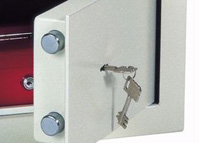
2. Digital lock - an electronic code lock or digital lock is nowadays a very popular form of locking safes and safes. You only need to remember your personal PIN code and you don't have to carry or hide the key. However, the downside is that if someone finds out the code somehow, you may have a problem. Safes and mailboxes without certification are supplied with a so-called emergency key in case you forget the code or the battery runs out, e.g. due to your long-term absence.Certified safes are not supplied with an emergency key for safety reasons, the control panel is supplied with or without a display for safes and safes.
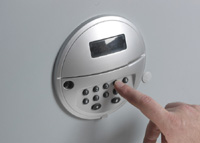
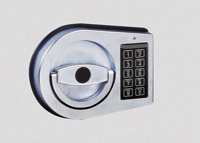
3. Electronic combination lock - the LaGard electronic combination lock is a more sophisticated version of a conventional electronic lock. It ensures greater security thanks to the combination of a modern electronic system and mechanical unlocking of the lock.
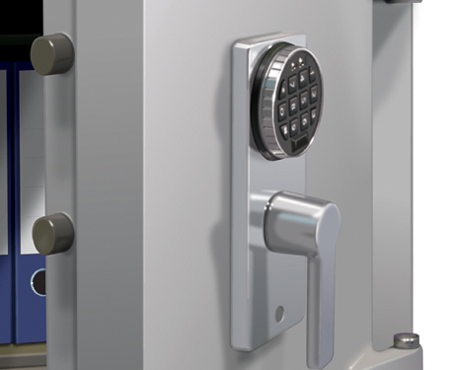
4. Mechanical combination lock - a mechanical combination lock is another security option at the customer's request. It is mainly used for safes in higher security classes, but it can also be combined with other types of locks for absolute protection of your valuables and documents.
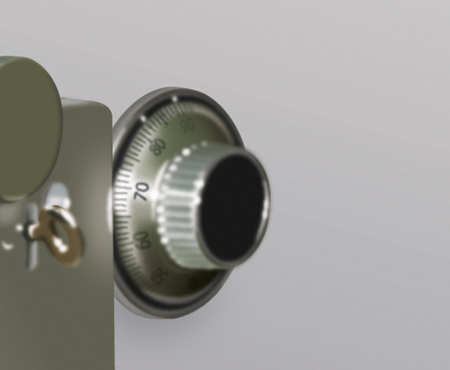
5. Fingerprint lock - the fingerprint lock is the newest option for locking safes, but it is currently only produced on a limited basis for safes and boxes without certification.Biometric authentication means the future of secure access to vaults and safes. Thus, we will encounter fingerprint readers more often, and in the future, for example, a retina scanner. However, that is still a really distant future.
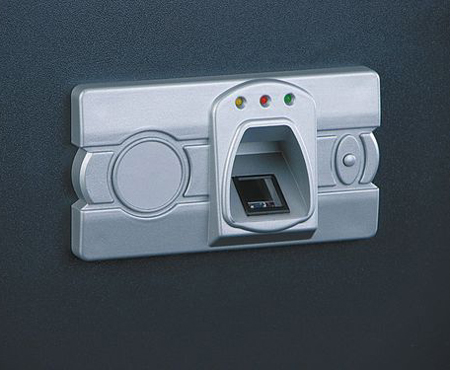
- Volume of the safe:
The choice must certainly be influenced by this criterion. Think carefully about what you will be keeping in the safe before you buy. Document safes, for example, already allow for the storage of ordinary files, so you no longer have to measure the inside.
If a "standard" safe is not enough for you, there is an option to buy a safe door and thus turn the whole room into a really big safe.
We hope our little guide has helped you on your way to greater security for your valuables.
